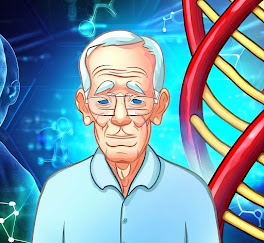As healthcare providers, nurses play a crucial role in caring for older adults. Understanding the different theories of aging is vital for nurses to provide targeted interventions and personalized care to promote healthy aging and prevent or manage age-related diseases. Two main theories of aging are stochastic and non-stochastic theories, which propose different underlying mechanisms of aging. By understanding these theories, nurses can provide tailored care that meets the unique needs of each older adult they serve.
Stochastic theories of aging suggest that aging is caused by random damage to biological molecules or systems, leading to cumulative effects that result in aging and age-related diseases. Here are some examples of stochastic theories of aging:- Free Radical Theory
- Accumulation of free radicals, which are unstable molecules produced during normal metabolic processes. These free radicals can damage DNA, proteins, and other cellular components, leading to the development of age-related diseases such as cancer, Alzheimer's disease, and cardiovascular disease.
- Example: Smoking is a major source of free radicals. Over time, smoking can lead to the accumulation of free radicals in the body, which can damage the cells and tissues, resulting in various age-related diseases.
- Error Catastrophe Theory:
- Accumulation of errors in the replication of DNA, RNA, and other cellular components. As these errors accumulate, they can lead to the loss of cellular function and the development of age-related diseases.
- Example: A common example of error catastrophe is in the development of cancer. Errors in DNA replication can lead to mutations that cause uncontrolled cell growth and the formation of tumors.
- Cross-Linking Theory:
- Accumulation of cross-links, or chemical bonds between proteins and other cellular components. These cross-links can cause stiffening of the tissues and loss of elasticity, leading to age-related diseases such as arthritis and atherosclerosis.
- Example: In diabetes, the excess glucose in the blood can lead to the formation of cross-links between proteins, resulting in damage to blood vessels and other tissues.
- Wear and Tear Theory:
- Damage to cells and tissues over time, resulting from normal wear and tear on the body. This damage can lead to the development of age-related diseases.
- Example: Osteoarthritis is a common example of wear and tear on the body. Over time, the cartilage in the joints can wear away, leading to joint pain, stiffness, and other symptoms.
- Somatic Mutation Theory
- Mutations in somatic cells, or cells that are not involved in reproduction. These mutations can lead to cellular dysfunction and the development of age-related diseases.
- Example: In Alzheimer's disease, mutations in the genes that encode for proteins involved in the formation of amyloid plaques and neurofibrillary tangles can lead to the accumulation of these abnormal protein structures, which can damage brain cells and lead to cognitive decline.
- Telomere Shortening Theory:
- Aging is caused by the shortening of telomeres, which are the protective caps on the ends of chromosomes that shorten with each cell division. As telomeres become shorter, the cells become less able to divide and repair themselves, leading to cellular dysfunction and the development of age-related diseases.
- Example: In cardiovascular disease, the shortening of telomeres in the endothelial cells lining blood vessels can lead to dysfunction in the vascular system, contributing to the development of hypertension, atherosclerosis, and other related conditions.
- Inflammation Theory
- Aging is caused by chronic, low-grade inflammation in the body, which can lead to cellular damage and the development of age-related diseases.
- Example: In rheumatoid arthritis, chronic inflammation can lead to the destruction of cartilage and other joint tissues, resulting in joint pain, stiffness, and loss of mobility.
On the other hand, non-stochastic theories of aging suggest that aging is a programmed process that is predetermined by genetic factors or other physiological mechanisms, rather than being caused by random damage. These theories propose that aging is a natural part of the life cycle and can be regulated by the body's own internal processes. Here are some non-stochastic theories of aging:
- Programmed Theory
- Aging is the result of a predetermined genetic program that regulates the body's natural processes, such as cell division and metabolism. According to this theory, the body is programmed to age and eventually die at a certain point, regardless of environmental factors.
- Example: Menopause is a programmed event that occurs in women as a result of changes in hormone levels and is not influenced by environmental factors.
- Endocrine Theory
- Aging is the result of changes in the body's hormone levels, particularly the decline in reproductive hormone levels that occurs with age. These changes can lead to decreased cellular function and the development of age-related diseases.
- Example: In women, the decline in estrogen levels after menopause can lead to an increased risk of osteoporosis and cardiovascular disease.
- Immunological Theory
- Aging is the result of changes in the body's immune system, particularly the decline in immune function that occurs with age. This can lead to an increased susceptibility to infection and the development of age-related diseases.
- Example: Older adults are more susceptible to respiratory infections, such as pneumonia, due to the decline in immune function that occurs with age.
Lewis, S. L., Dirksen, S. R., Heitkemper, M. M., & Bucher, L. (2017). Medical-Surgical Nursing: Assessment and Management of Clinical Problems (10th ed.).




No comments:
Post a Comment